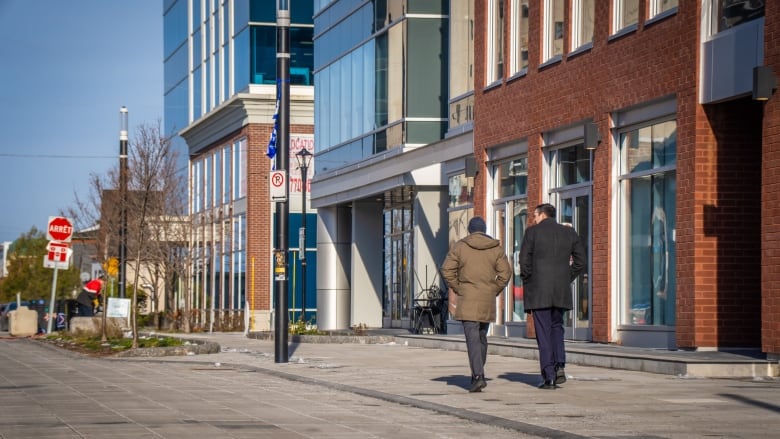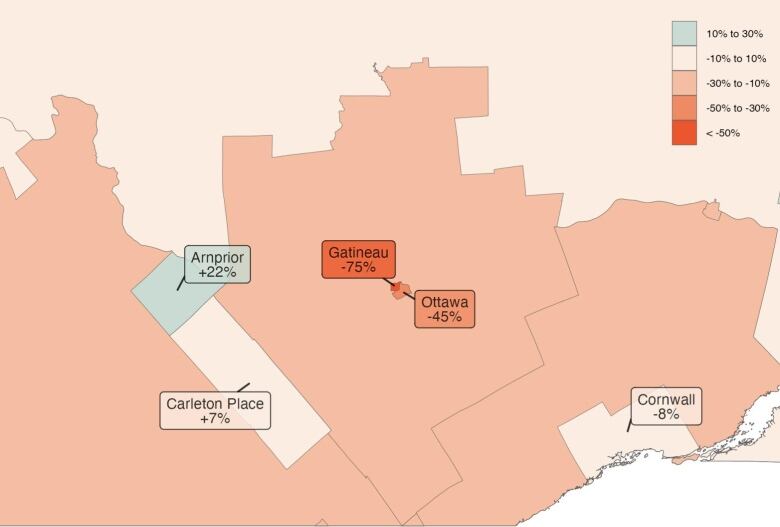Ottawa, Gatineau among Canada's weakest for the return of downtown workers
Data shows Ottawa also slower to see transit riders rebound

Ottawa lags behind most cities in Canada when it comes to public transit ridership andemployees returning to their workplaces downtown during the pandemic, according to new data.
Numbers crunched by the Canadian Chamber of Commerce showthe percentage of workers in September 2022 who commuted to offices in downtown Ottawa was down a little more than 45 per cent compared to the pre-pandemic level of January 2020.
That was49th out of 55 downtown areas across Canada included in the study.
Downtown Gatineau ranked dead last with a staggering 74.7 per cent decrease in the number of workers commuting from home into the core.
The average decrease across Canadian cities and regions, whichincludes metropolitan, suburbanand rural areas, is sevenper cent, according to the study.
The percentages were calculated using cellphone location data gathered from the firm Environics Analyticscross-referenced with employment and demographic data from Statistics Canada.
Conversationabout 'futureof work'
Stephen Tapp,chief economist with the Canadian Chamber of Commerce, said fewer workers commuting into the downtowns of larger cities could help smaller communities.
"We're hoping it will start a conversation about the future of work," said Tapp.
"There's a lot of opportunities for some of these outlying cities that are within a one- or two-hour commute where we've seen big increases in mobility."
Ontario citiesBrantford(39 per cent), Barrie (29 per cent), Kingston (28 per cent) and Brampton (27 per cent) all showed increases in movements to their respective downtowns since the start of the pandemic.

Ridership vs. the national average
The lag in the return of workers to downtown Ottawa is being mirrored by a slower than average return of riders on OC Transpo.
According to Statistics Canada, which tracks urban transit passenger trips, ridership across Canada recovered to about three-quarters (73.5 per cent)of pre-pandemic volume in September.
At about 63 per cent, OC Transpo is well behind the national average with 5.7 million rides in September 2022, compared to 9.1 million rides in September 2019.

According to OC Transpo staff, it's estimated federal public servants accounted for 20 per cent of transit riders before the pandemic, meaning 30,000 to 35,000 of them were using public transit on an average day.
Since early March, federal departments have beengradually returning to on-site or hybrid workafter being given the green light by the Treasury Board, which oversees the federal workforce.












_(720p).jpg)


 OFFICIAL HD MUSIC VIDEO.jpg)
.jpg)



























































































